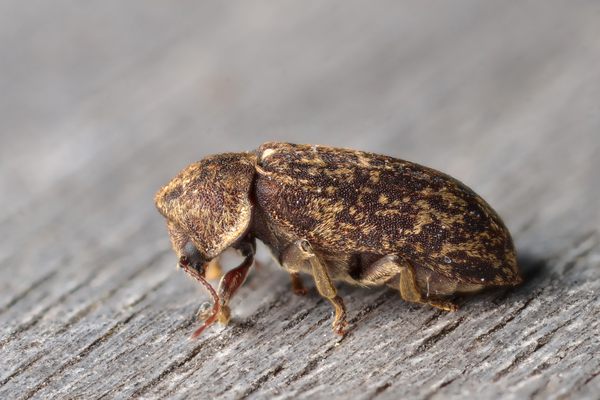Headless Cockroaches: The Myth, The Legend, The YouTube Videos
This is part two of a three-part series on decapitation. Previously: Zombie dogs and the birth of neurosurgery.
We will probably never know who was the first person to behead a cockroach and watch in horror as its antennae and legs continued to twitch—not just for a few seconds of death throes but for…a while.
It is true: a cockroach can survive without its head. How long is not entirely clear, though. In the 2009 book The Earwig’s Tail, entomologist May Berenbaum went looking for an answer and could not find any scientific studies that documented the maximum possible length of a cockroach’s life after beheading. But it is known that cockroaches can survive without heads for weeks, until they dry up. Or starve to death.
This is gross, but also deeply fascinating. In the world of science, there is a substantial body of work that dispassionately examines the headless cockroach: what can it do? What is the role of the cockroach version of a spinal cord versus the cockroach brain in making the insect’s heart beat and legs twitch? But there is also of genre of kitchen-sink cockroach science that’s more about the flat-out ick factor. Can a cockroach live without its head? People sometimes need to prove to themselves that this is, in fact, true, when they find a cockroach at home and decide to cut off its head, just to see what happens.
Of course, they record it, too. Welcome to one of the grossest genres of YouTube video.
The scientific examination of the headless cockroach began at least 50 years ago. In 1962, George Adrian Horridge, a very respectable neurobiologist, published in Nature the results of experiments featuring decapitated cockroaches and other insects. In the experiment, the cockroaches would be held over a saline solution that delivered a shock to one of their legs. Over time, the roaches would learn, even without a head, to try to keep that leg raised, in order to avoid the shocks. This set-up even has its own name: the Horridge preparation.
“One of the technical advantages of using insects in these kinds of studies, is they can withstand considerable damage and continue to operate,” says Roy Ritzmann, a professor at Case Western who studies how animals move. “But after decapitation, they cannot feed or take in water and that will ultimately kill them.”
Another strategy, cutting the nerve tissue that connects the insect’s version of a spinal cord from the brain, has the same neural effect, says Ritzmann. But this technique also preserves the esophagus, which means the cockroaches, although they need to be fed by hand, can survive longer.
Since Horridge’s experiments, scientists have come to better understand the neural intricacies of the insects’ leg movement and escape behavior by studying headless or zombified roaches. Ritzmann has worked on studies showing that cockroaches need their brain stem-like structure to walk normally, for instance. Cockroaches who had their spinal cord cut could still walk “in perfectly normal gaits.”
“But they walked forever,” he says.
In some experiments, though, the headless state of the roach has less to do with the subject being studied and more to do with convenience. In one study, which measured the heart rate of cockroaches, investigators were faced with “the technical difficulty in restraining the cockroach for the records.” But without their heads, the roaches were “motionless”—perfectly docile research subjects, who no longer squirmed or tried to flee.
In this state, the headless cockroaches lingered, anywhere from several days to weeks.
It is hard to believe that any creature can survive without its head. People certainly cannot. (Headless sideshow ladies excluded.) And most creatures that humans prefer to spend time with do not do well without their brains. Dogs and cats need them, and even the famous headless chicken, Mike, had a little bit of his brain stem left behind, which kept his heart beating.
Stories of headless cockroaches have a bit of mythology to them. There’s a factoid, that’s been featured in at least one movie and many an internet post, that a headless cockroach can survive for nine days. It’s one of those pieces of information that’s so specific that it seems baseless, enough to doubt the very premise, that a cockroach can survive an abnormal length of time without its head.
Perhaps that is why people seem compelled to see for themselves if the legend is real—if cockroaches truly can survive without their heads. There’s a minor genre of YouTube video featuring decapitated cockroaches, in which a person has found a cockroach, cut of its head and filmed the results. (Rarely do people include the actual decapitation in their documentation; sometimes the unfortunate roach is found already beheaded, perhaps by a dog or other enemy.)
Often, these roaches have been without their heads for hours. But they have not expired. Instead, they twitch.
But all decapitated cockroaches must eventually die. However tough they are, even headless cockroaches cannot last forever.



















Follow us on Twitter to get the latest on the world's hidden wonders.
Like us on Facebook to get the latest on the world's hidden wonders.
Follow us on Twitter Like us on Facebook